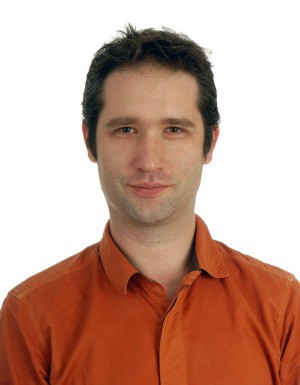The Role of Policy in Implementation of Dr. Borlaug’s Message: “Take It To the Farmer”
 |
| Dr. Bram Govaerts |
People are often discouraged by the prospect of dealing with an administrative procedure in a government office, whether that may be requesting a revision of taxes paid, registering for public health services or updating a driver’s license. Before we know it, we find ourselves trying to complete a process online, talking to several clerks or public servants over the phone, photocopying dozens of documents and, ultimately, waiting for far too long in the twisting lines of local administration offices.
Understandably, we despair and revile against the request of filling yet another registration form, filing a claim for the eleventh time or sending off a follow-up letter to an unanswered letter of complaint. After some procrastination, we find the time to do what we are asked to do because we need to drive, or have a tax refunded or have that medical check done. Of course, government efficiency varies greatly from country to country. Nevertheless, most people will do their best to access a service or to receive a swift reply from their government.
I have found that, when it comes to influencing public policy for the benefit of farmers, consumers or the environment, most of us react like the average citizen overwhelmed by the burden of bureaucracy; we do not want to have anything to do with it!
As researchers working in publicly-funded institutions, we want our annual budgets approved on time. As farmers struggling to adapt to climate change, we need that 50 percent subsidy or more on our water bills. As consumers, we demand healthy and nutritious food at a lower price. Public policy makers draft bills and allocate diminishing budgets to answer competing requests from supervisors and from those members of the public or constituents who weigh heavy on their bosses minds.
For that reason, public policy and decision makers are key to implementing Dr. Norman Borlaug’s final will: “Take It to the Farmer.” (“It” being the product of innovation and research in agricultural sciences and also the hope to have better crops and livelihoods.) As a scientist working at the Mexico-based International Maize and Wheat Improvement Center (CIMMYT), I have often found myself willing to spend 100 percent of my time in research related activities. After all, I am specialized in soil conservation and tropical agriculture; I did not spend years and years studying in a Belgian university with research projects in Ethiopia, Mexico, India and other countries to draft budgets, answer urgent information requests or attend long meetings with government officials who are accountable for the money CIMMYT receives for research and development.
However, my work is worthless if it fails to reach the farmer, no matter how innovative or groundbreaking it may be. Norman Borlaug helped me to understand this at a very early stage in my career, and for that reason I will be forever grateful to him.
Three years ago, I was honored to receive the 2014 Norman Borlaug Award for Field Research and Application, endowed by the Rockefeller Foundation, for implementing “leading-edge sustainable programs that are transforming subsistence agriculture and unsustainable farming systems in Mexico and other regions of the world into productive and sustainable operations.” I believe the World Food Prize Selection Committee rewarded my contribution to a public policy shift in Mexico, from a subsidies-based, top-down approach to rural development to one of capacity building, innovation and incentives based on sound agronomic research. This policy change took the form of a project called MasAgro, which has become a benchmark of sustainable intensification in Mexico and the Latin America region.
Following Borlaug’s call to action, MasAgro develops farmers’ ability to adopt the product of research on maize and wheat conservation and improvement, agronomy, machinery, ICTs and postharvest technologies. MasAgro breeders have developed 34 improved maize varieties and 10 wheat varieties adapted to different farming conditions in Mexico. Improved seeds and conservation agriculture have helped farmers increase yields and keep them above the national average by 1.6 tons per hectare on maize-based systems (income grew by 23 percent and yield increases up to 67 percent.) 55 local seed companies sold over 1 million bags of improved maize seed in 2016, a market share of 30 percent. By the most conservative estimates, for every dollar invested in MasAgro participant maize, farmers make $7.
To protect and share these encouraging results with more farmers, I get my hands dirty on the field, but I also put a jacket on, and sometimes even a tie! I participate in countless long meetings to help shape public policy in Mexico and the Latin American region and in other developing countries where farmers can benefit from CIMMYT’s Sustainable Intensification efforts. I do my best to offer innovation, better data and information that leads to sound decision making and helps develop sustainable agrifood systems for improved nutrition, nature conservation and national security.
| Comments |
|
I know the job you have done in Mexico and I can say it is excelent I love the capasite building for profesionals and farmer at the same time tham masagro.
Jose A Valencia V
| Joseantoniovalenciav@yahoo.com
| 09/07/2017 9:47 AM
|


